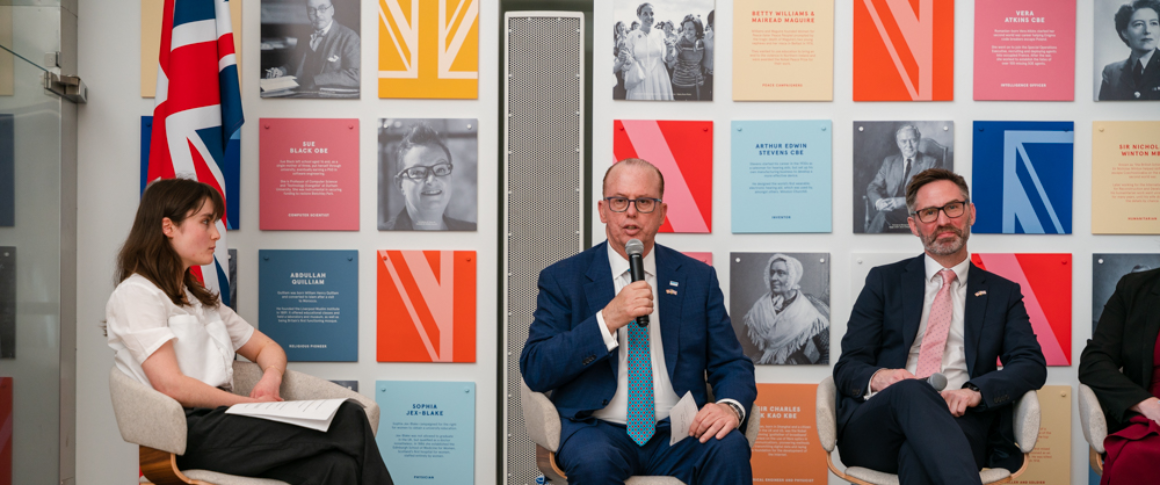Leaders from NCARB and our United Kingdom counterpart, the Architects Registration Board (ARB), recently celebrated the new reciprocity agreement together in Washington, DC, at the British Embassy. When the agreement goes into effect on April 25, eligible architects can take advantage of the streamlined path to reciprocal licensure in the United States and the United Kingdom.
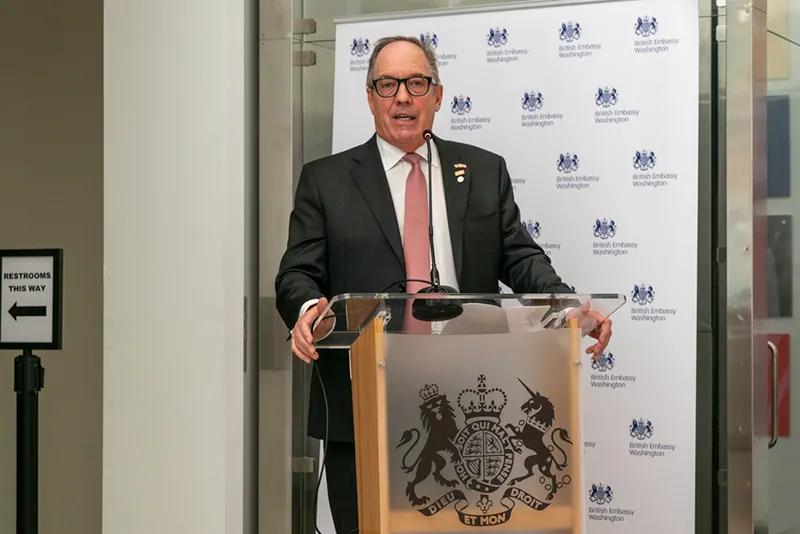
The celebratory events—hosted by the esteemed British Ambassador Dame Karen Pierce—began with remarks from President Bayliss Ward, NCARB, AIA, highlighting the five years of work the two organizations put into crafting the milestone agreement.
During the panel discussion that followed, CEO Michael Armstrong noted that the agreement symbolizes a fresh start in NCARB’s relationship with the larger global community and reiterated the organization's continued commitment to expanding opportunities for NCARB-certified architects and reviewing the viability of multiple paths to licensure—while maintaining consistent standards to protect the public.
Our ultimate customer is the public, so we must have rigorous and consistent standards at the frontline to protect the public’s health, safety, and welfare.
–NCARB CEO Michael Armstrong
Armstrong also explained how the U.S.-U.K. mutual recognition agreement (MRA) model could be used as a framework for other organizations looking to expand opportunities for licensed professionals in light of an increasingly interconnected global economy.
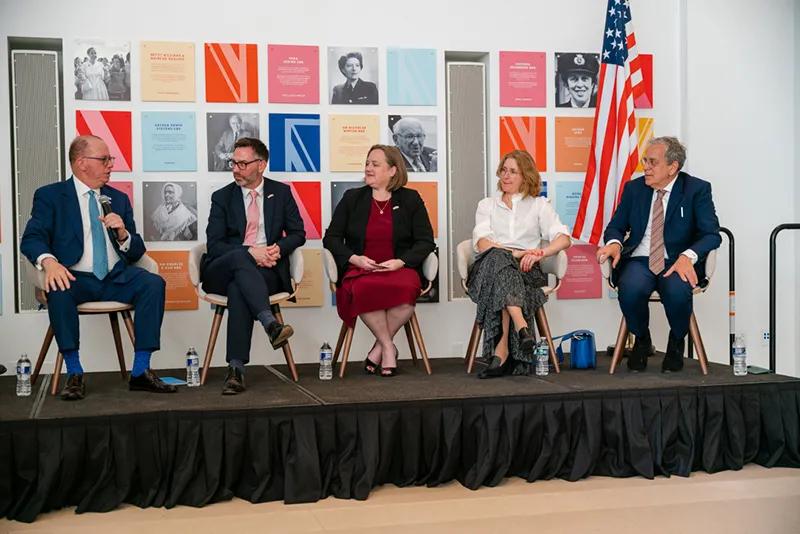
NCARB CEO Armstrong was joined on the panel by ARB CEO Hugh Simpson; American Institute of Architects President Emily Grandstaff-Rice, FAIA; Royal British Institute of Architects (RIBA)-USA President Catherine Clark; and British architect and philanthropist John McAslan, CBE, RIBA, FRIAS, FRSA, FRICS, FICE, RSA, Hon. FAIA, FRSE. ARB CEO Hugh Simpson shared about ARB’s and NCARB’s desire for continuous improvement and the two organizations’ commitments to potentially evolving the MRA as needed over time.
Education and training are changing constantly. This agreement is for now, but we must ensure the MRA is constantly under review. It is limited in scope currently, but that doesn’t mean it will always be.
–ARB CEO Hugh Simpson
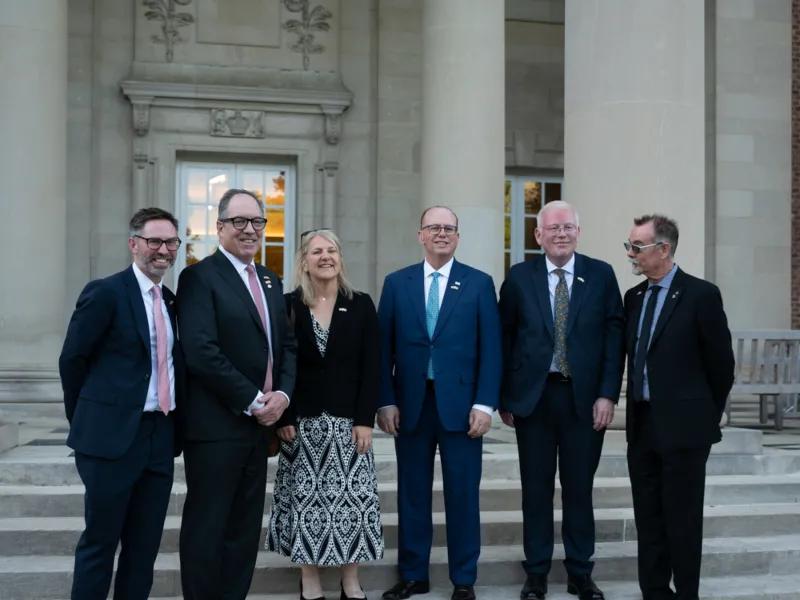
British Ambassador Dame Karen Pierce welcomed the attendees to the following celebratory reception and congratulated the two organizations on their achievements. U.K. Minister of State at the Department for Business and Trade Nigel Huddleston shared remarks, calling the MRA a pioneering agreement between NCARB and ARB and highlighting how it removes a critical trade barrier between the two countries and will result in faster licensing for U.K. architects in the United States. Congratulatory remarks were also shared by U.S. Deputy Trade Representative (USDTR) Jayme White and NCARB President Bayliss Ward.
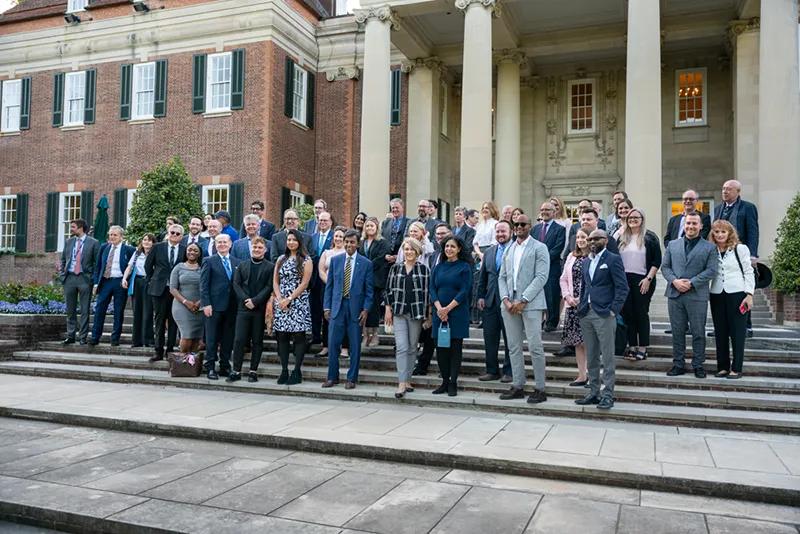
This Agreement goes much further than simply creating project opportunities. For the great benefit surely must lie in what the U.K. might learn from the U.S. and similarly, what the U.S. might learn from the U.K.—through collaboration and integration, architectural innovation, an enhanced understanding of sustainable practice and passive design...
–British Architect and Philanthropist John McAslan
If you’re interested in earning a reciprocal license under the U.S.-U.K. MRA, review these resources to see if you’re eligible for the agreement and understand the steps for expanding your practice internationally:
- Review qualifications for reciprocal licensure with the United Kingdom
- See a list of current jurisdictions accepting the U.S.-U.K. agreement
- Learn more about the standard path to NCARB certification
The U.S.-U.K. MRA is based on similarities in architecture licensing standards established by NCARB and the requirements for registration in the United Kingdom and reflects similar arrangements with Canada, Australia, and New Zealand. To learn more about earning a license to practice architecture abroad, visit ncarb.org/international.
